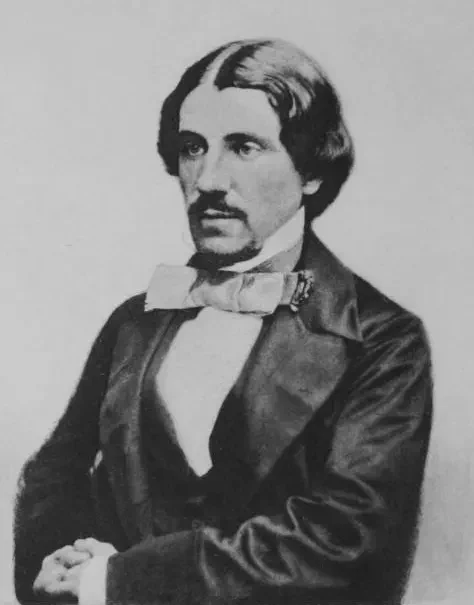- /
- Celtic calendar /
- 3rd /
- March 19 /
- March 19, 1824

William Allingham (19 March 1824 – 18 November 1889) was an Irish poet, diarist and editor. He wrote several volumes of lyric verse, and his poem “The Faeries” was much anthologised.
But he is better known for his posthumously published Diary, in which he records his lively encounters with Tennyson, Carlyle and other writers and artists. His wife, Helen Allingham, was a well-known watercolourist and illustrator.
William Allingham was born on 19 March 1824 in Ballyshannon, a small town in the south of County Donegal in Ulster in the north of Ireland, which is now in the Republic of Ireland. He was the son of the manager of a local bank who was of English descent.
His younger brothers and sisters were Catherine (born 1826), John (born 1827), Jane (born 1829), Edward (born 1831, and lived only a few months) and a still-born brother (born 1833). During his childhood his parents moved twice within the town, where the boy enjoyed the country sights and gardens, learned to paint and listened to his mother’s piano-playing. When he was nine, his mother died.
He was educated at the Royal Belfast Academical Institution until the age of 14, when he obtained a post in the custom-house of his native town, and held several similar posts in Ireland and England until 1870.
During this period were published his Poems (1850; which included his well-known poem, “The Fairies”) and Day and Night Songs (1855; illustrated by Dante Gabriel Rossetti and others).
Rossetti’s Letters to Allingham (1854–1870), edited by Birkbeck Hill, were published in 1897. Laurence Bloomfield in Ireland, his most ambitious, though not his most successful work, a narrative poem illustrative of Irish social questions, appeared in 1864.
He also edited The Ballad Book for the Golden Treasury series in 1864, and Fifty Modern Poems in 1865.
Working on an un-ostentatious scale, Allingham produced much lyrical and descriptive poetry, and the best of his pieces are thoroughly national in spirit and local colouring. His verse is clear, fresh, and graceful. His best-known poem remains his early work, “The Faeries”.
Allingham had a substantial influence on W. B. Yeats; while the Ulster poet John Hewitt felt Allingham’s impact keenly, and attempted to revive his reputation by editing, and writing an introduction to, The Poems of William Allingham (Oxford University Press & Dolmen Press, 1967). Allingham’s wide-ranging anthology of poetry, Nightingale Valley (1862) was the inspiration for the 1923 collection Come Hither by Walter de la Mare.[